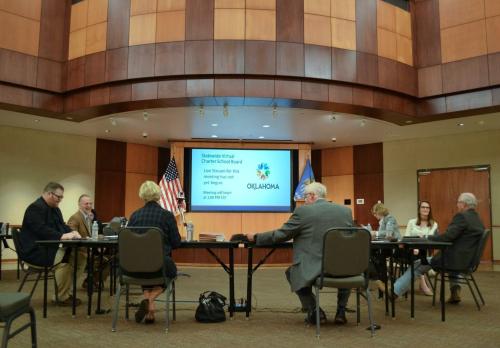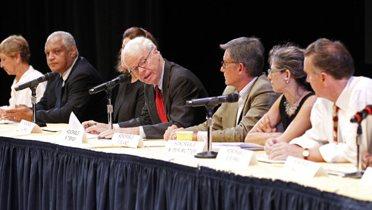Last month, in Trinity Lutheran Church v. Comer, a case about playground resurfacing for a church preschool, the Supreme Court potentially opened the doors for state governments to fund religious education through voucher programs. Given the national prominence of the school choice debate, this is an opportunity to reflect on the context and ramifications of this case beyond constitutional law, most notably for the future of the school choice movement.
By way of background, Trinity Lutheran Church applied for a grant under the Missouri Department of Natural Resources to resurface its playground with recycled tires. When the department rejected the otherwise qualified applicant under a clause in the Missouri Constitution that prohibits money from the public treasury from being given to religious institutions, Trinity sued.
The Court ruled 7-2 in favor of the Church. “The exclusion of Trinity Lutheran from a public benefit for which it is otherwise qualified, solely because it is a church, is odious to our Constitution all the same, and cannot stand,” Chief Justice John Roberts stated in the decision.
Though the decision did not address voucher programs, the ruling has implications for education policy nationwide by creating the basis for discrimination lawsuits against the 37 other states with similar constitutional clauses.
The history of the Blaine Amendment
In the 19th century, Rep. James Blaine tried and failed to amend the Constitution to prohibit the grant of federal funds to religious institutions. His failure led to a state crusade for similar provisions, ultimately resulting in the inclusion of so-called “Blaine Amendments” in 38 state constitutions, including Missouri’s.
In an era of Protestant-run public schooling, Catholic communities began opening new schools to teach their principles to the enormous influx of Catholic immigrants entering the country. The Protestant majority feared a takeover of their schools, and thus lobbied for state constitutional amendments or restrictive wording in the constitutions of newly admitted states.
The Supreme Court itself acknowledged the “shameful pedigree” of the Blaine Amendments in 2000, but chose then and again last month to allow the amendments to stand since they are remain “textually neutral” and “apply equally to all religious traditions and denominations.”
The lack of a national amendment on the issue has allowed petitioners to sue for their rights under other aspects of the Constitution, like the free exercise clause in the First Amendment. In 2002, the Supreme Court ruled in Zelman v. Simmons-Harris that the Constitution allows religious schools to receive voucher funding. The Zelman case, though, did not prevent states from instituting their own stricter rules on the matter, and thus left the voucher question open to states.
Today, 14 states and the District of Columbia implement voucher programs, most of which are restricted to students with individualized education programs (IEPs). Only one state, Maine, has prohibited religious schools from participating. Some of these voucher states also have Blaine Amendments and have nevertheless instituted programs, but mostly avoid legal suits due to the small scale of the programs and the rarity of IEP enrollment in religious schools. As statewide voucher programs with fewer restrictions expand in popularity, however, Blaine Amendments should become more relevant.
School choice and Blaine
Every state’s Blaine Amendment looks different, complicating an analysis of the effects of the Trinity case. Some states prohibit the “direct removal of funds” from a public treasury, while others may also prohibit a “removal of revenues,” and some still prohibit “indirect money transfers.” These wording changes may seem small, but have implications for the type of school choice program allowable.
In Montana, the Blaine Amendment prohibits the payment of public funds to churches, but an education tax credit program remains there nonetheless. A state judge ruled earlier this year that refunds to parents are not the same as grants directly or indirectly given to institutions and upheld the program.
Despite the prohibition of the use of public funds for sectarian use in Nevada’s Blaine Amendment, the Nevada Supreme Court upheld the constitutionality of education savings accounts (ESAs) last year. The court stated that “once the public funds are deposited into an education savings account, the funds are no longer ‘public funds’ but are instead the private funds of the individual parent.” Thus, the law establishing ESAs does not violate the state’s Blaine Amendment.
Voucher programs have fared worse than tax credits and ESAs under state courts, regardless of a state’s wording of Blaine. The Colorado Supreme Court recently struck down the state’s voucher program under Blaine because it constituted state payments to religious institutions. As a result, the American Legislative Exchange Council, a nonprofit organization of conservative state legislators and private sector representatives, has encouraged members to implement tax credits or ESAs instead of vouchers to avoid the legal battle. The Supreme Court’s decision in the Trinity case could change that.
Implications of the Trinity decision
In the majority opinion of the Supreme Court, Chief Justice John Roberts stated: [T]he Department’s policy expressly discriminates against otherwise eligible recipients by disqualifying them from a public benefit solely because of their religious character.” Six other justices supported the decision, but some disagreed on a particular footnote in the decision.
Footnote 3 narrowed the scope of the case to playground resurfacing and limited its application to exclude other forms of religious discrimination. Since only four justices signed onto the footnote, while it is in the text of the decision, it does not represent the official opinion of the court and thus is not the law of the land. This allows future cases to cite the decision beyond the scope of playgrounds, but the disagreement also indicates a hesitancy on the court to rule broadly on the issue at this time.
Though the Trinity decision does not strike down Missouri’s Blaine Amendment nor explicitly endorse state voucher programs allowing religious participation, the case does open an avenue for states with Blaine Amendments to create and expand their programs with less risk. Rather than needing to find avenues for payments to parents like tax credits or ESAs, state legislators can now more wholeheartedly endorse voucher programs that directly pay religious schools with less fear of lawsuits under Blaine. Secretary of Education Betsy DeVos cheered the decision, which may allow her to push voucher programs in lieu of the federal tax credits previously on the Trump agenda.
A ruling directly on religion and school choice may have to wait a few years though. In light of the Trinity decision, the Supreme Court vacated the judgement in a case about a district voucher program in Colorado and sent it back to lower courts. The program is currently on hold due to a Colorado Supreme Court ruling, but voucher advocates are hopeful the wording of the Trinity ruling will sway the state judiciary a second time around. If appealed afterward, the case may work its way back up to the Supreme Court and give the justices another chance to strike down Blaine while expanding the mantle of choice.
Meanwhile, Trinity v. Comer may have opened the door for both an expansion of voucher programs in Blaine states nationwide and more court cases on the conflict. Yet, how wide that door has opened–beyond “a few extra scraped knees” of preschoolers–remains to be seen.
Sarah Novicoff contributed to this post.







Commentary
Beyond scraped knees: The implications of a Missouri playground on state voucher programs
July 12, 2017